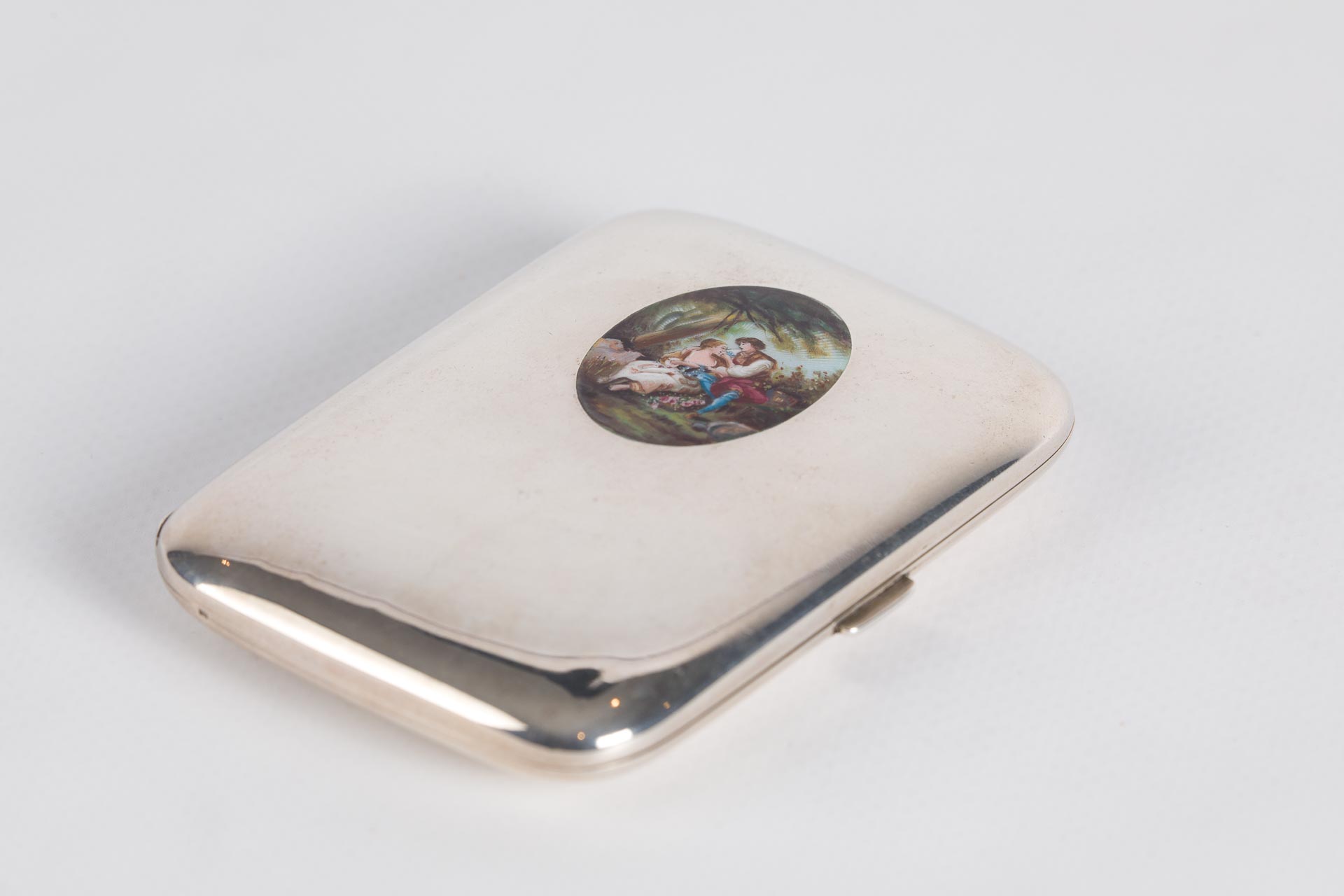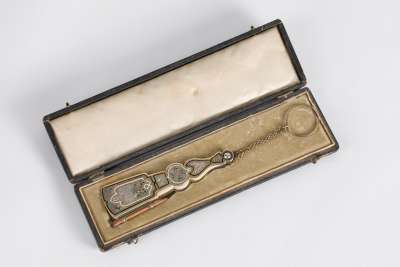This Austrian sterling silver cigarette case, dating from circa 1910, features an intricately detailed scene of a courting couple on its exterior. Crafted with precision, the case boasts a gilded interior, adding a touch of elegance to its functional design. The artistry captures the essence of early 20th-century European craftsmanship. Originating from Austria, the case exemplifies the period’s penchant for combining practicality with decorative beauty.
Condition Report
The cigarette case is in very good condition, showing minimal signs of age and wear, which is remarkable considering its age of over a century. The sterling silver exterior remains largely unblemished, preserving the detailed depiction of the courting couple. The gilded interior retains much of its original lustre, with only slight surface wear that is commensurate with its age. The hinges and closing mechanism function smoothly, indicative of the careful craftsmanship typical of the era. Overall, the case has been well preserved, making it not only a functional item but also a collector’s piece.
Dimensions
Weight: 93gm, Length: 8.3cm, Width: 6.5cm, Height: 1cm.
A Sophisticated Accessory for Smokers
Cigarette cases like this one were originally designed as practical accessories for smokers, offering a safe and stylish way to carry cigarettes. During the early 20th century, cigarette cases became a fashionable item, often reflecting the user's social status. This particular case, with its artistic decoration and gilded interior, would have been a luxurious accessory, likely owned by someone of considerable means. The craftsmanship and materials used in its creation suggest it was intended for use at social gatherings or as a personal item to impress peers.
Reflecting Early 20th Century European Design
The design of this cigarette case is a fine representation of early 20th-century European style, characterised by intricate detailing and a focus on romantic themes. The scene of a courting couple is a motif commonly found in decorative arts of this period, reflecting societal interests in romance and sophistication. The gilded interior not only served a functional purpose but also added to the luxurious feel of the piece. This case captures the elegance and artistic flair typical of the time, making it a tangible piece of history from the Austro-Hungarian Empire’s cultural landscape.
The Craft of Sterling Silver and Gilding
Creating a sterling silver cigarette case such as this involved skilled craftsmanship and attention to detail. The intricate scene on the exterior would have been etched or embossed by a skilled artisan, requiring precision and artistry. The gilding process involved applying a thin layer of gold to the interior, enhancing both the aesthetic appeal and durability of the case. Such craftsmanship ensured that the item was both functional and beautiful, a testament to the artisanship of early 20th-century silversmiths. The quality of materials and the level of detail in the work indicate that this piece was made with care and expertise.
Made by a Master Austrian Silversmith
This cigarette case was crafted by an accomplished Austrian silversmith, reflecting the high standards of craftsmanship that were prevalent in Austria at the time. Austrian artisans were renowned for their ability to blend functionality with detailed decorative elements, producing items that were both utilitarian and beautiful. The maker’s mark, typically found on such pieces, would confirm the authenticity and origin, though its presence is not explicitly mentioned here. The expertise involved in creating such a case illustrates the high level of skill and artistry achieved by Austrian silversmiths during the early 1900s.
Sought After by Collectors of Early 20th Century Silver
Cigarette cases from the early 20th century are highly prized by collectors, particularly those made of sterling silver and featuring intricate designs. This piece is especially desirable due to its Austrian origin and the romantic theme depicted in its design. Collectors are often drawn to items that not only serve a practical purpose but also offer insight into the cultural and social contexts of their time. The exceptional condition of this piece adds to its value, making it a noteworthy addition to any collection of early 20th-century silver or decorative arts. Collectors appreciate such pieces for their historical significance and the high level of craftsmanship they represent.















